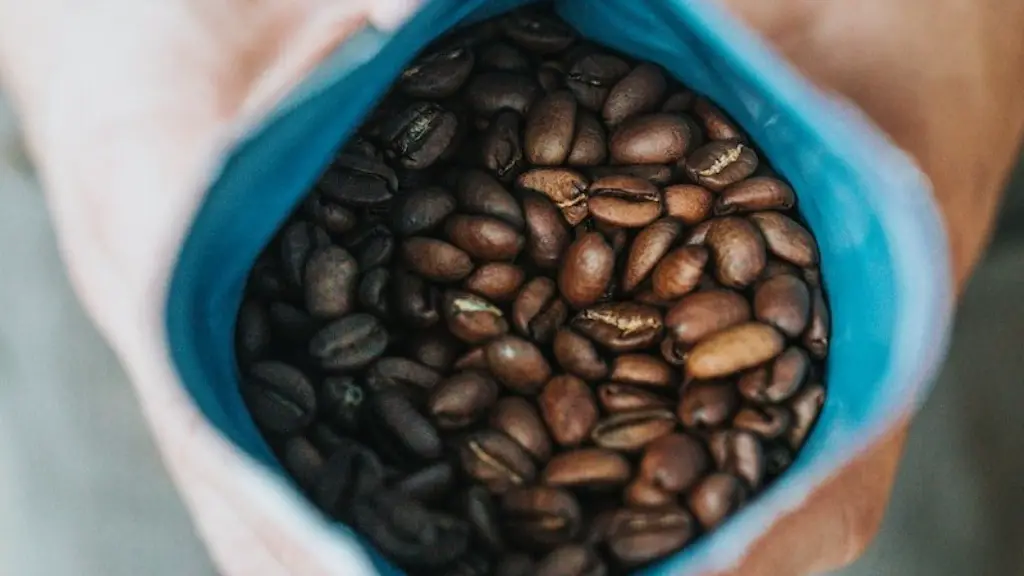It is not hard to grow coffee beans. In fact, it is quite easy. All you need is a little bit of space and some patience. The coffee plant is a small evergreen tree that can grow up to 10 feet tall. It has dark green leaves and white flowers. The coffee beans are actually the seeds of the coffee plant. They are found in the coffee fruit, which looks like a small, red, cherry. To grow coffee beans, you will need to plant a coffee tree in a location that gets full sun and has well-drained soil. You will also need to water it regularly. Once the coffee tree begins to produce fruit, you can harvest the coffee beans and roast them to make your own coffee.
No, it is not particularly hard to grow coffee beans. However, there are a number of things that must be taken into account in order to ensure a successful crop. For example, coffee beans require a warm climate and plenty of rain (or artificial irrigation) in order to thrive. They also need to be planted in rich, well-drained soil. If all of these conditions are met, then growing coffee beans can be a relatively straightforward process.
How long does it take to grow coffee beans?
It will take approximately 3 to 4 years for newly planted coffee trees to bear fruit. The fruit, called the coffee cherry, turns a bright, deep red when it is ripe and ready to be harvested. There is typically one major harvest a year.
The coffee plant is native to Ethiopia and was first introduced to the Americas by way of the port of Moca in the Dominican Republic. Coffee cultivation quickly spread throughout South and Central America, and eventually made its way to North America. Small-scale coffee production began in the United States in the mid-1700s, and today, the United States is home to a number of coffee companies and coffee roasters. While coffee isn’t grown on a large scale in the United States, there are a few coffee farms located in Hawaii, California, and Puerto Rico.
How much coffee does one tree produce
The average coffee tree produces 10 pounds of coffee cherry per year, which is equivalent to 2 pounds of green beans. All commercially grown coffee is from a region of the world called the Coffee Belt. The Coffee Belt is a region that stretches around the globe and is located between the Tropics of Cancer and Capricorn. This region is ideal for coffee production because it provides the perfect combination of temperature, rainfall, and sunlight.
Anyone wishing to grow coffee must not only be living in a temperate environment but also be willing to undertake a long-term, labor-intensive commitment to their land and its crops. Coffee is typically grown from seed, and each tree takes on average between 3 to 5 years to bear fruit. Growing coffee is a significant investment of time and resources, but can be a rewarding experience for those who are up for the challenge.
Can you grow coffee in your backyard?
Coffee plants can make a great addition to any home, whether you have a lot of space to work with or not. If you’re short on space, you can grow coffee plants indoors with ease. Just be sure to place them in an area that gets diffused sunlight throughout the day, as they prefer bright, indirect light. For those with a bit more space to work with, coffee plants can also be grown outdoors. No matter where you choose to grow them, coffee plants are sure to add a touch of warmth and charm to your home.
The coffee industry is largely dependent on human labor. Farmers and their families pick coffee beans by hand, and only a small amount of machinery is used in the process. This is because coffee is typically grown on small farms, only five to seven acres in size. If coffee were grown on larger farms, it would require an army of workers to harvest the beans.
What two states grow coffee?
Coffee is a crop that is grown in many countries around the world. The United States is one of those countries, and coffee can mostly be grown in two locations within the country; Hawaii and Puerto Rico. In Hawaii, coffee grows on Maui; another coffee grower is the state of California. Hawaii and California are the areas where coffee is grown on a commercial scale.
Hawaii and California may be the only two US states to grow coffee today, but coffee is now on Florida’s radar, too, as farmers and scientists research the possibility of coffee production in the Sunshine State. Coffee requires a warm, humid climate to grow, and Florida’s climate is ideal for coffee production. Florida’s coffee industry is still in its infancy, but with the right research and development, it has the potential to grow into a thriving industry.
What state does not grow coffee
This is a note about Rajasthan. Rajasthan is not involved in the production of coffee. The correct answer is that Rajasthan is not involved in the production of coffee.
Harvesting time for coffee cherries can vary depending on the region and altitude. Most coffee cherries will only ripen once a year, and the harvesting process can last for 2-3 months. In countries north of the equator, coffee cherries are typically harvested from September to March. For countries south of the equator, harvesting generally occurs from April to August.
What is the best climate to grow coffee?
The tropical climate is ideal for coffee growing as it provides high humidity and consistent temperatures throughout the year. This results in rich soils that support coffee plants and produce high-quality coffee beans. The tropical climate also helps to protect coffee plants from pests and diseases.
Coffee farmers make a good profit because coffee is a very popular beverage. Coffee is one of the most traded commodities in the world and prices have remained relatively stable over the years. Farmers can expect to make a profit of around $20 per kilogram of coffee beans.
How many coffee farmers are poor
Of the 125 million smallholder coffee farmers, Enveritas estimates that at least 55 million live below the international poverty line of $320 a day. The highest levels of poverty are observed in Africa and Oceania.
There are many factors contributing to the high levels of poverty among smallholder coffee farmers. For one, coffee farming is often a risky and unpredictable business, due to factors such as weather and pests. In addition, smallholder farmers generally have limited access to financial services, extension services, and markets. As a result, they are often unable to invest in inputs or make necessary repairs, which can further exacerbate poverty.
It is clear that more needs to be done to support smallholder coffee farmers and help them escape poverty. However, it is also important to remember that coffee farmers are not a homogeneous group, and therefore, solutions must be tailored to the specific needs of different farmers. With this in mind, we must continue to work together to find innovative and sustainable solutions that will improve the lives of coffee farmers and their families.
Since the early 1990s, Fairtrade certified coffee cooperatives have been able to sell their coffee beans at a Fairtrade Minimum Price (FMP). The FMP is set at a level that covers the costs of production, and allows producers to make a reasonable profit. In recent years, the FMP for coffee has been $140 per pound. This is about 40 percent more than the current market price for coffee. For organic coffee, the FMP is $170 per pound. Fairtrade certified coffee cooperatives currently earn the Fairtrade Minimum Price of $140 per pound – about 40 percent more than the current market price – or $170 per pound organic. This allows them to invest in their businesses and communities, and provide a better quality of life for their workers.
How many months does it take to harvest coffee?
Harvesting coffee cherries is a delicate and important process. Depending on the specific variety, it takes approximately 3-4 years for newly planted coffee bushes to bear fruit. The fruit, commonly termed cherries, depending on the degree of ripeness, turn from green to bright or dark red – the unripe ones being green in colour.
Coffee cherries need to be harvested at just the right time – not too early and not too late. If harvested too early, the coffee beans will be underdeveloped and lack flavour. If harvested too late, the beans will be overripen and may be fermented or mouldy.
The best time to harvest coffee cherries is when they are ripe and red in colour. This usually occurs between late September to early November.
Harvesting coffee cherries is usually done by hand. This is because it is a delicate process and requires a gentle touch so as not to damage the coffee beans. Coffee cherries are first sorted by ripeness before they are picked. Once picked, the coffee cherries are then transported to the processing facility where they are hulled and the beans are separated from the fruit.
The production of coffee can be temperamental, as coffee trees only flourish in tropical climates, with an even keel of both sunshine and water. For coffee growers, this means constant vigilance to ensure their coffee trees are receiving the right amount of both sun and water. Too much or too little of either can jeopardize the coffee crop.
Conclusion
No, it is not hard to grow coffee beans.
It is not hard to grow coffee beans. With proper care, coffee beans can thrive in many different climates. While difficult to grow in extremely hot or cold weather, with a little extra effort, coffee beans can be grown in a wide range of temperatures.





